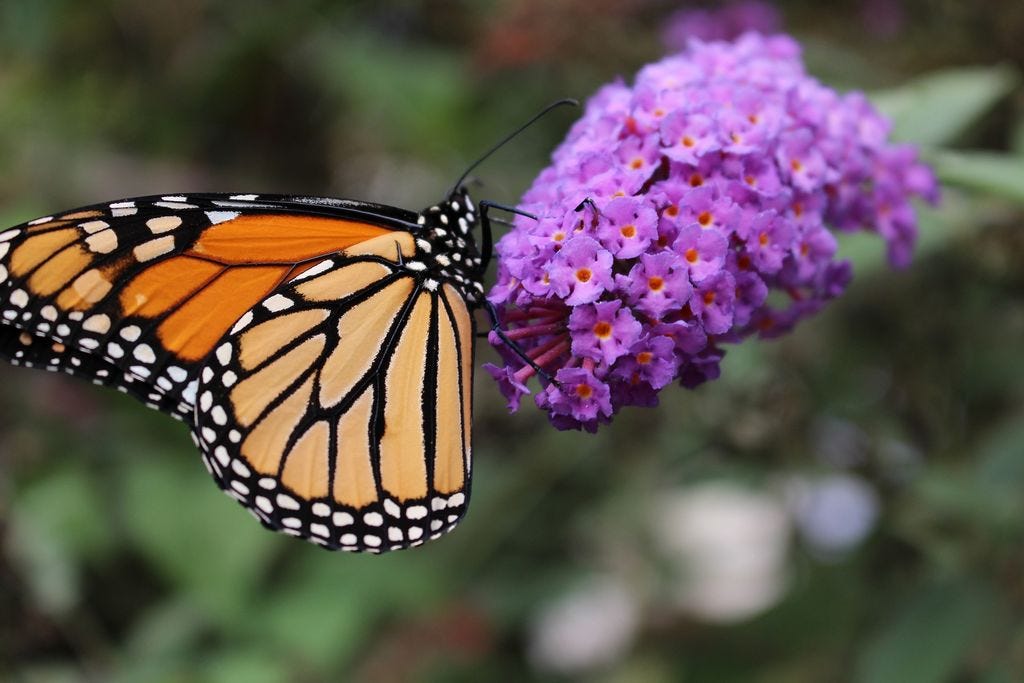
You’d have to look hard to find a downside to butterflies. Few cause damage to crops or humans, for instance.
On the positive side, they are important pollinators; good indicators of the ecological quality for a habitat, as important components of the food chain; colorful, aesthetically pleasing, fun to watch; and a backyard, park or schoolyard favorite of children and adults.
Their role in U.S. crops’ pollination is not small. From corn to cabbage to carrots, pollinators are crucial to production of 150 crops worth billions of dollars each year.
The honey bee is the most valuable pollinator; only 15 percent of crops are pollinated by domestic bees; 80 percent are pollinated by wild bees and other wildlife, including butterflies.
More broadly, about 218,000 of the world’s 250,000 flowering plants, including 80 percent of the world’s species of food plants, rely on pollinators to reproduce.
The main threat to butterflies is the destruction and loss of their habitats. The channelization of riparian areas, draining of wetlands, lowering of water tables, growth of cities, and intensification of agriculture all contribute to this habitat loss. Widespread use of pesticides may also threaten healthy butterfly populations.
Scientists are particularly concerned about habitat loss in “nectar corridors”— migratory routes that pollinators follow to take advantage of a sequence of plants coming into bloom along a south-to-north gradient in the spring and the reverse in the fall.
The habitat is critical to migrating Monarch butterflies, as well as hummingbirds, bats, doves and other nectar-dependent migratory animals.
Adult butterflies rely on nectar, while developing caterpillars need leaves and foliage. Both get their water from the plants.
A variety of native wildflowers, trees, shrubs and grasses interspersed across the landscape offers good butterfly habitat. Consider planting wildflower gardens, roadsides and idle areas with native nectar-producing plants, legumes and grasses.
Darryl L. Williams is a district conservationist with the United States Department of Agriculture’s Natural Resources Conservation Service, 938 N. Ferdon Blvd., Crestview. Call him at 682-3714, extension 109.
—
The Monarch butterfly journeys more than 2,000 miles to spend winter in warmer climates. This migration makes it somewhat different from most butterflies, which hibernate.
COMING UP
The Panhandle Butterfly House’s grand opening is 10 a.m. to 3 p.m. May 8 in Navarre Park, at the foot of the Navarre Beach Bridge, on U.S. Highway 98. The event will feature a butterfly-friendly plant sale, a butterfly bazaar featuring butterfly items for sale, and local Master Gardeners will be available to answer questions. Lunch will be available for purchase. See www.panhandlebutterflyhouse.org for more information.
DID YOU KNOW?
This article originally appeared on Crestview News Bulletin: WILLIAMS: Why butterflies — Crestview's pretty pollinators — are so important
